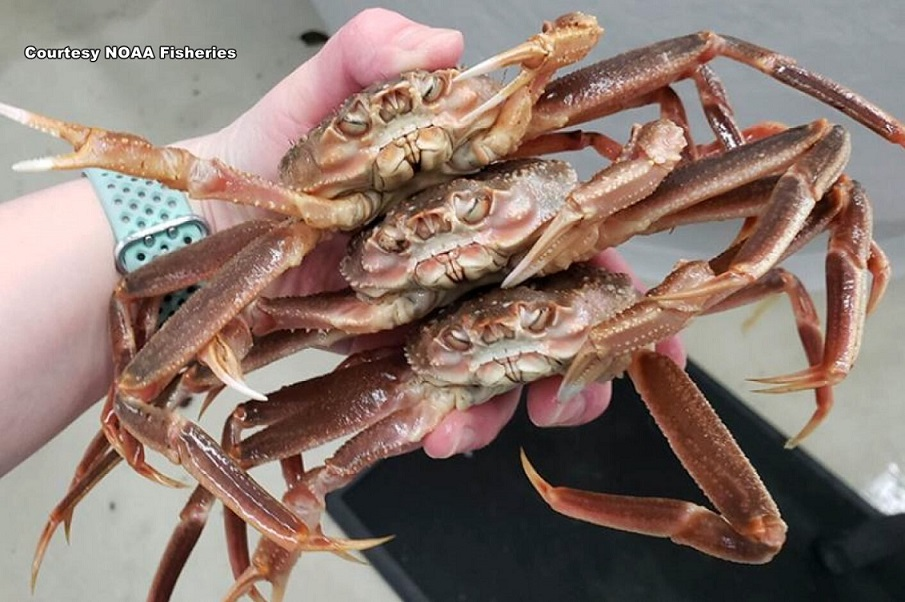
1. NOAA: Bering Sea Snow Crab Collapse Result of Human-Caused Climate Change
ANCHORAGE, Alaska – According to NOAA, the snow crab population in the southeastern Bering Sea has drastically declined due to human-caused climate change. Scientists note an ecological shift from Arctic to sub-Arctic conditions since the preindustrial era. Snow crabs thrive in cold conditions, but warming seas have reduced sea ice, impacting their habitat.
The population saw a 90% decline in 2018-2019, attributed to unusually warm temperatures and low ice levels linked to human-induced climate change. While some species, like red salmon and sablefish, thrive, snow crabs face ongoing challenges. However, there is hope for a rebound, as small snow crabs have been observed in recent surveys. Scientists emphasize the need to prepare for continued warming and its impacts on marine ecosystems.
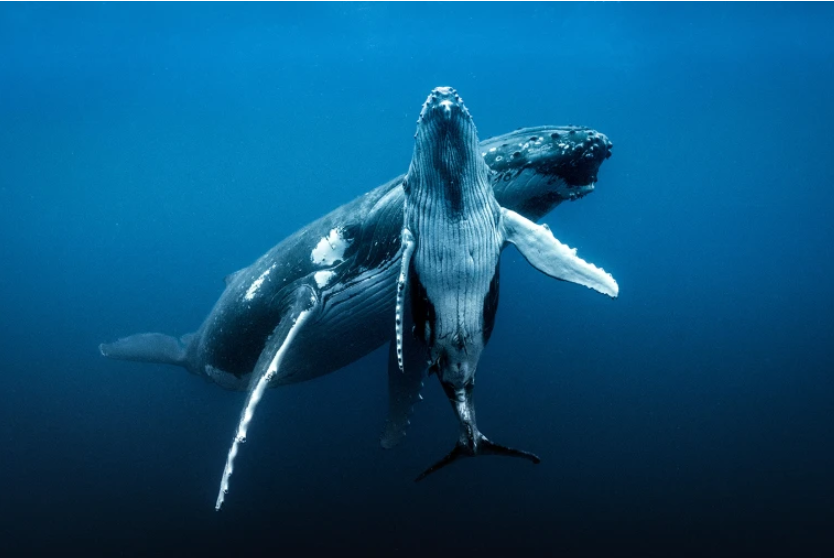
2. Time for a Change? How Dismantling Old Conventions Could Revitalize Global Wildlife Protection
Nearly 80 years after its inception, the International Convention for the Regulation of Whaling (ICRW) has outlived its usefulness. It is considered a “zombie” organization by political scientist Julia Gray, who describes it as an institution that consumes time, energy, and resources without generating added value. Created in 1946 to address unsustainable whaling, the International Whaling Convention (IWC) achieved significant milestones, including a global moratorium on commercial whaling in 1985, leading to the recovery of many whale species.
However, recent decades have seen stagnation, with only minimal disputes impacting current whaling activities by countries like Japan, Norway, and Iceland. In preparation for the IWC’s 69th meeting, a proposal to dissolve the IWC and transfer its responsibilities to other international bodies and national governments will be considered. This move could set a precedent for phasing out ineffective institutions, emphasizing the need to consolidate environmental organizations.
Thank you for your generous gift that will help us continue the production of this weekly, free publication
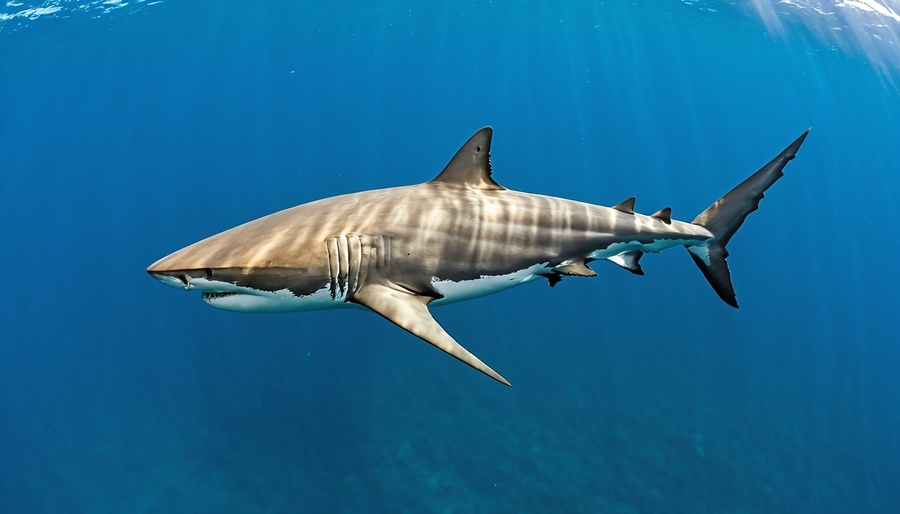
3. Iran Explores Shark Tourism to Enhance EcoTourism
CHABAHAR, Iran—Iran is exploring shark tourism, aiming to boost non-oil revenue and enhance eco-tourism by leveraging the unique marine resources of the Sea of Oman. The study was carried out under the auspices of Iran’s National Science Foundation, targeting the enhancement of eco-tourism sectors nationwide. The research delved into four critical elements of the shark tourism sector in the Chabahar waters: the varieties of sharks present, the interest level among Iranians for shark tourism, and the possibilities for creating competitive diving clubs.
It has been noted that merging this sector with other established nature tourism activities in the region, such as dolphin and bird-watching tours and visits to mangrove forests, could further propel the growth of the tourism industry. Integrating these diverse tourism offerings into a unified marine tourism package could attract more tourists to the region.
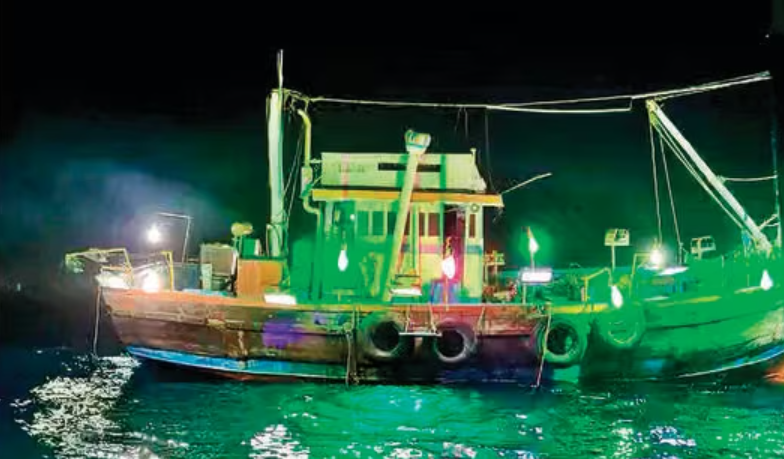
4. Trawlers With LED Lights Spell Doom for Goan Fishing Sector
GOA, India — There is simmering discontent off the shores of Goa as traditional fishermen have raised vociferous opposition to the deployment of powerful LED lights by trawler boats. These bright artificial illumination systems, they allege, are indiscriminately luring and vacuuming a wide range of marine species and rapidly depleting fish stock. The bone of contention is the use of excessive LED lights by larger trawlers to attract entire shoals of fish toward the water surface at night.
Traditional fishermen, employing more sustainable pole and line methods, claim this practice disrupts the ecological balance and jeopardizes their livelihoods. A High Court-directed inspection report by Goa Shipyard Limited (GSL) has exposed rampant and almost criminal violations by fishing vessels at Cutbona, Malim, and Vasco.
Editorial Note: Do NOT click on the article’s red “Watch Now” Button – it leads to security warnings!
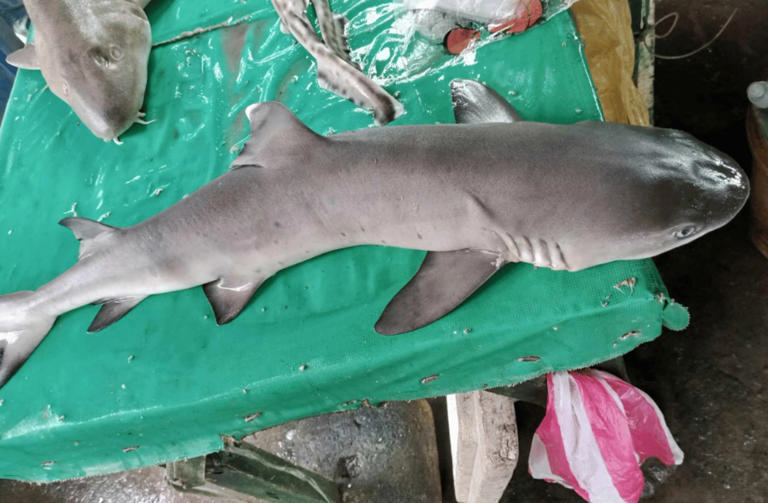
5. Shark Trade in Hot Water: BFAR Targets Illegal Sales in Philippines
LEGAZPI CITY, ALBAY, Philippines—The Bureau of Fisheries and Aquatic Resources (BFAR) started inspecting the public market in Matnog town in Sorsogon after photos of sharks and rays being sold there went viral on social media. In a statement, BFAR reminded the public that whitetip reef sharks and several other species of sharks are protected under an international convention and Philippine laws.
Photos posted on social media by news outlet Sorsogon News showed that five coral catsharks (Atelomycterus marmoratus) and two whitetip reef sharks (Triaenodon obesus) were being sold in the public market alongside sea rays.“The coral catshark is not listed under the CITES Treaty, but its capture and trade are covered by other applicable regulations,” according to the BFAR. Appendix II of Cites prohibits the catching, possession, transport, sale, and trade of whitetip reef sharks, and violations may incur millions in penalties.
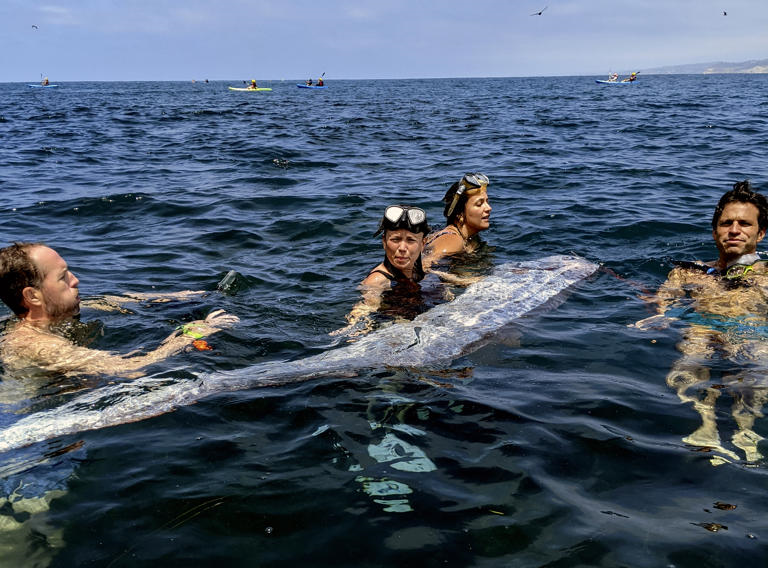
6. Rare ‘Doomsday’ Oarfish Emerges off San Diego Coast, Exciting Scientists
SAN DIEGO, California—Kayakers and snorkelers recently discovered a rare oarfish near La Jolla Cove. The oarfish is the longest type of bony fish; only 20 have been found in California since 1901. The discoverers and lifeguards brought the deceased fish to a National Oceanic and Atmospheric Administration facility for a necropsy. It will join the Scripps Marine Vertebrate Collection for further research.
Known as Regalecus glesne, oarfish possess a unique ribbon-like shape, enabling vertical swimming in deep seas. The nonprofit added that they have large bulging eyes and can grow to more than 30 feet, describing them as “one of the longest and most odd-looking fish in the sea.”They feed on krill and small crustaceans and can exceed 30 feet in length, making them one of the sea’s most distinctive giants.
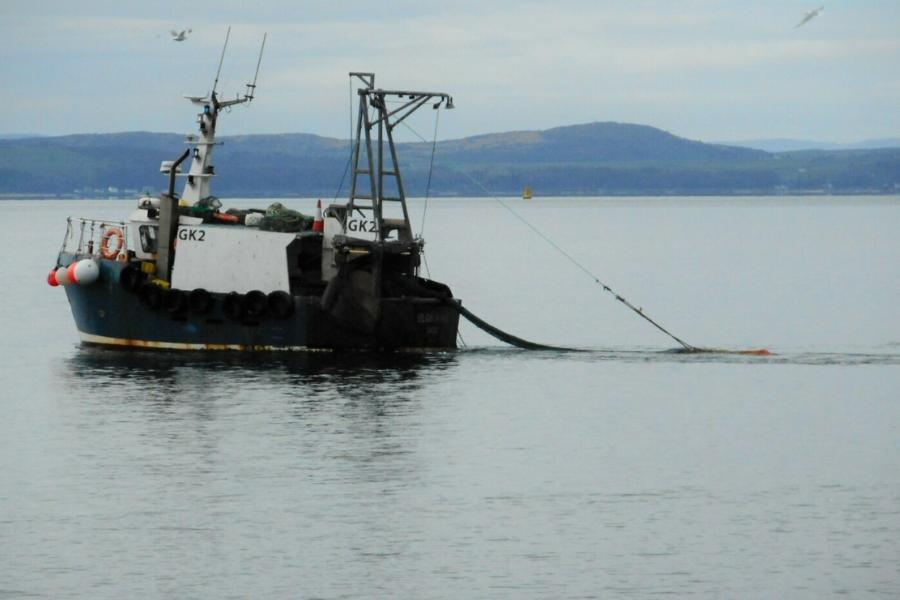
7. Proposed Ban on Bottom Trawling in Scotland’s MPAs Explained
The Scottish Government’s latest proposal to restrict bottom trawling within offshore Marine Protected Areas (MPAs) is perhaps more tentative than some conservationists would’ve liked. The consultation, which is open until October 14, seeks views on the proposal to fully ban the use of trawling equipment in five offshore MPAs, with either partial or total bans at another 15.
Understandably, ministers are looking for a policy that enjoys the backing of environmentalists and the fishing industry. Trawling – the act of pulling a heavily weighted net that scrapes along the sea floor to catch fish and other sea life – has detrimental impacts on the environment. It is an indiscriminate method. It results in high levels of by-catch and scrapes the sea floor, damaging corals, reefs, sponges, and pretty much anything else that lives on the bottom of the sea.
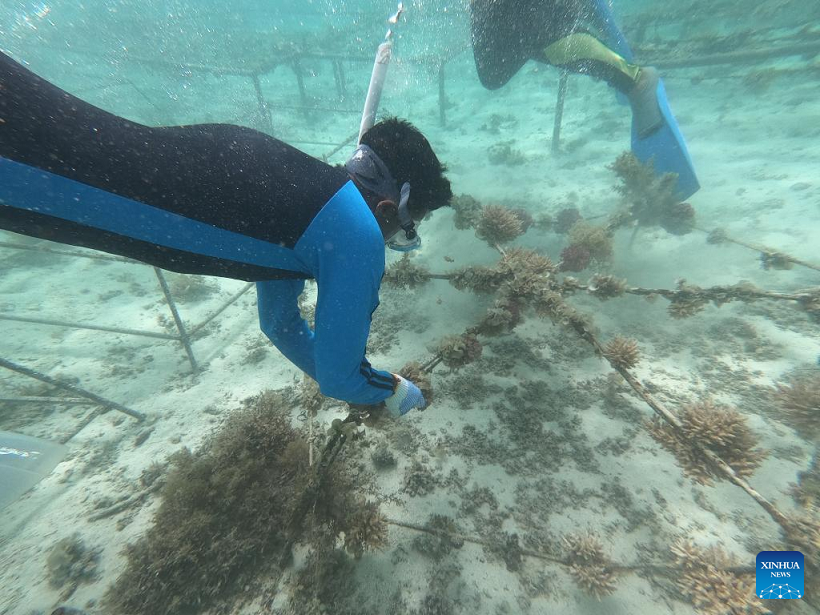
8. China and Mauritius Work Together for Underwater Reforestation
PORT LOUIS, Xinhua, China—Off the east coast of Mauritius in the Indian Ocean, several coral nurseries stand. Coral fragments are cultivated here, and grown-up corals will then be transplanted to a degraded area of reef, thus reforesting under the sea. This project is jointly undertaken by the Chinese tech giant Huawei and the Mauritius non-governmental environmental protection group EcoMode Society.
In the past, once scientists left a coral cultivation site, they didn’t know what was happening underwater. For example, the crown-of-thorns starfish, known as a “killer” of coral reefs, could eat up to four square meters of coral seedlings in a single night, only to be discovered the next day when it was too late. As a solution, Huawei has deployed underwater cameras, GPS receivers, 5G technologies, and a data cloud to monitor coral reef restoration sites.
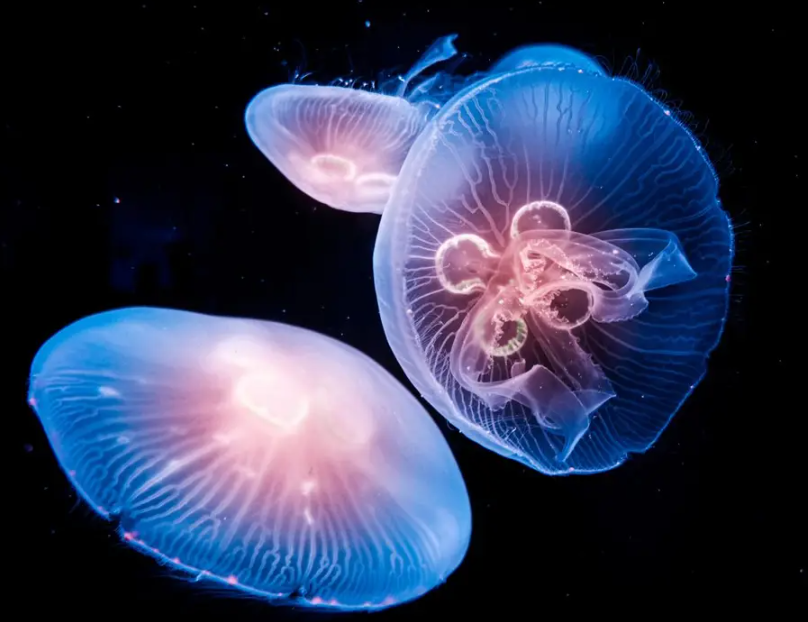
9. Ocean’s Twilight Zone Stabilizes the Marine Food Chain
The twilight zone, the ocean layer below the surface where light is scarce, plays a crucial role in shaping marine ecosystems. Understanding the impact of this zone on phytoplankton matters because they are essential for maintaining balance in the marine food chain. A recent study highlights the interaction of well-lit surface water and the twilight zone beneath on-surface ecosystems, primarily through a process known as “thermocline renewal,” where warmer ocean waters across the upper 300-500 meters are renewed by circulating through the surface ocean.
The findings emphasize the importance of subsurface nutrient pools in supporting surface ecosystems. Phytoplankton are also vital players in the ocean’s biological carbon pump. By decomposing organic matter that sinks from the surface and releasing nutrients back into the upper ocean, bacteria in the twilight zone influence how efficiently carbon is sequestered in the ocean depths.
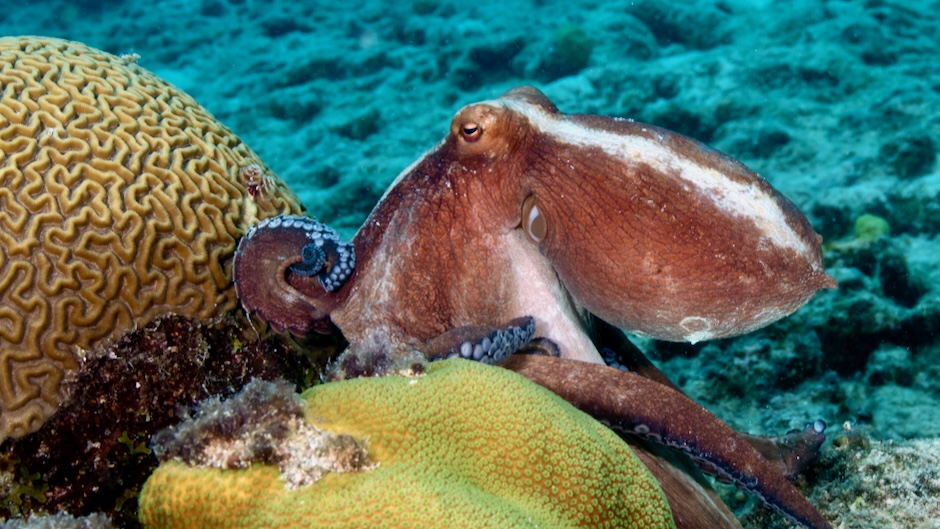
10. The OCTOPUS Act: A Push to Protect Octopuses From the Dangers of Commercial Farming
As Sea Save Foundation reported two weeks ago, the U.S. Congress is considering the OCTOPUS Act, a federal law that aims to ban commercial octopus farming in the United States. The legislative effort was initiated amid growing global concern over the ethical and environmental implications of octopus farming.
Here we share that Jennifer Jacquet, a professor at the University of Miami Rosenstiel School of Marine, Atmospheric, and Earth Science, co-authored a letter published in the August 15, 2024, issue of Science that explains why the OCTOPUS Act should be enacted into law and is signed by one hundred concerned scholars signifying their support. The increasing demand for exotic meats from luxury markets primarily drives the motivation behind octopus farming. Jacquet and her co-authors argue that satisfying such markets does not justify the significant risks posed to animal welfare and the environment.
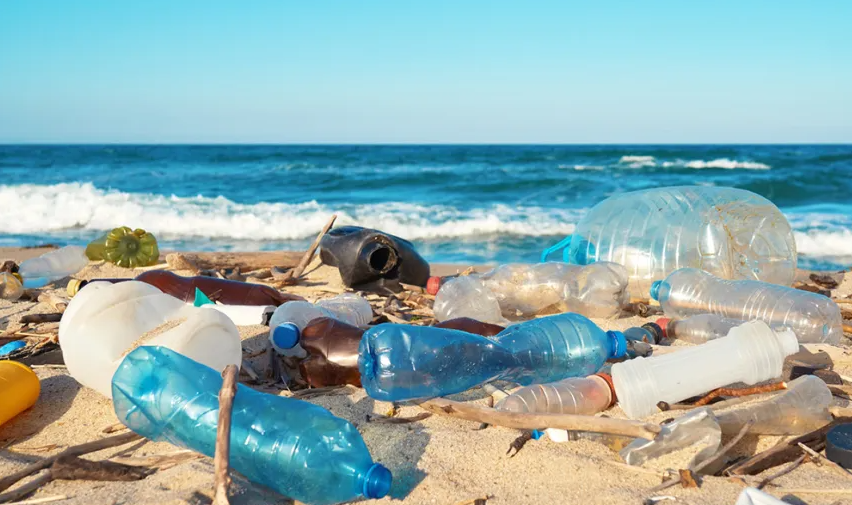
11. Scottish Government Proposes 25p Charge on Single-Use Drinks Cups
The Scottish Government is proposing a 25p charge on all single-use drinks cups to address environmental waste. The charge would apply to all materials, with exceptions for schools and free beverages in hospitals and care settings. Similar charges exist in Europe, such as the Netherlands and the Republic of Ireland. The proposal will allow retailers to cover reasonable implementation costs and seek input on whether the proceeds should benefit businesses or be managed by the government.
Scotland used 388 million single-use cups in 2021-22, generating 5,400 tonnes of waste. The charge aims to reduce waste, mimic the successful carrier bag charge, and encourage sustainable practices. Marine Conservation Society supports the move, citing significant reductions in plastic bag litter since their introduction. Public feedback is encouraged to refine the approach.
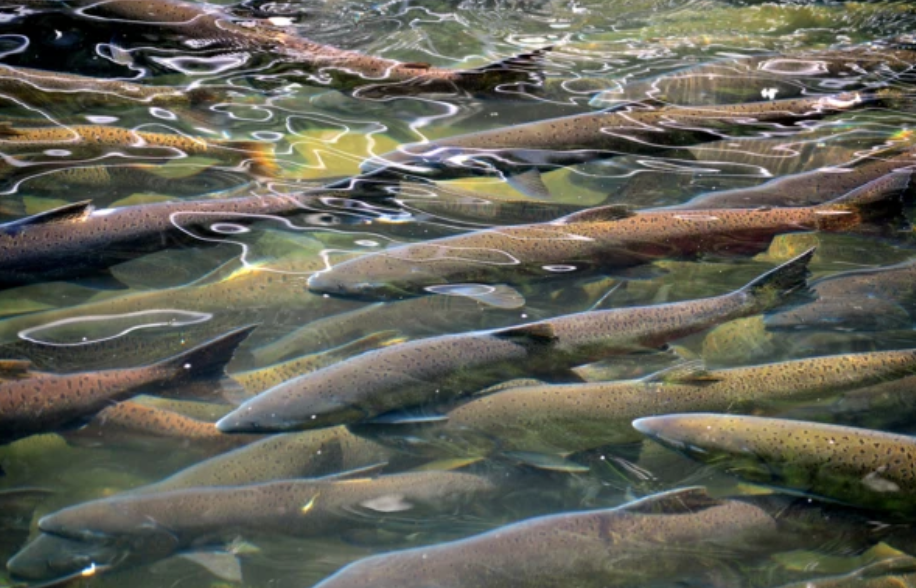
12. Canada to Build New Hatchery to Boost Wild Pacific Salmon Recovery
PRINCE GEORGE, British Columbia — The Canadian federal government plans to build a new Pacific salmon hatchery in Prince George, British Columbia, supported by the Pacific Salmon Strategy Initiative. The hatchery, set to be constructed this fall along the Nechako River, aims to aid the recovery of Chinook and sockeye salmon populations. Operated by Fisheries and Oceans Canada in partnership with the Lheidli T’enneh First Nation and Canfor Pulp Ltd., the facility addresses a critical gap in salmon conservation infrastructure.
Fraser River salmon, crucial for many First Nations and British Columbians, are in decline, and this hatchery will help improve survival rates and provide valuable data for rebuilding efforts. The project also focuses on training, development, and collaboration with Indigenous communities to enhance ecological and cultural values.
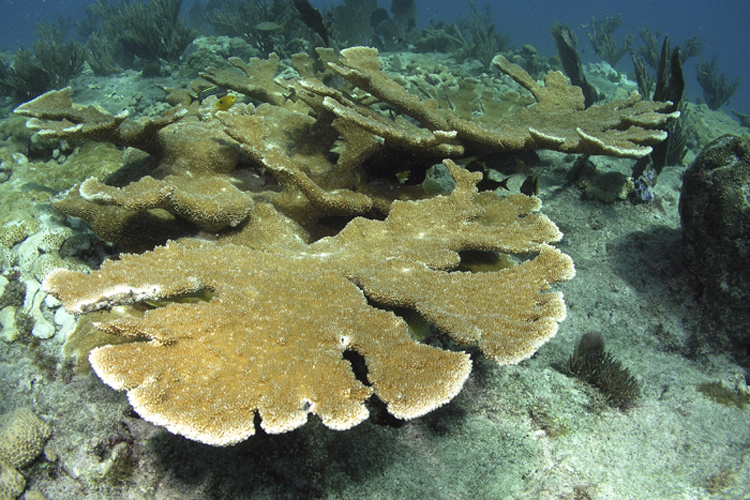
13. Elkhorn Coral on the Brink: Florida’s New Status Report
Elkhorn coral is a threatened species protected by the Endangered Species Act and the International Union for Conservation of Nature. Last summer, an ocean heatwave impacted coral reefs throughout much of the western Atlantic, especially in the southern Florida Keys. WLRN Public Media interviewed SPCMSC research marine biologist Ilsa Kuffner regarding a NOAA story released on August 14 reporting that all Florida elkhorn south of Key Largo were killed due to heat stress.
Elkhorn coral is critical to coastal resilience because it is the only coral species that builds the reef crest—a part of the reef responsible for dampening wave energy as it approaches shorelines. Kuffner says that USGS science is ongoing to help agencies decide the best ways to protect and restore elkhorn coral populations in places essential for shoreline protection.
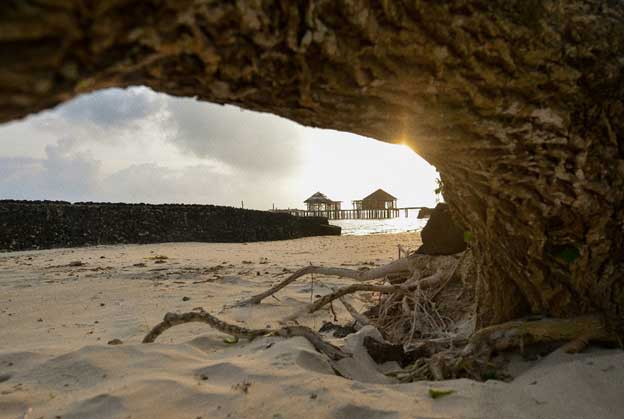
14. In Samoa, Protecting the Ocean Is Our Way of Life – Opinion Piece by Cedric Schuster
In Samoa, we use a simple phrase to capture our way of life: Fa’asamoa. This concept’s core is respect for others, devotion to family, and a deep appreciation for preserving our natural resources. Fa’asamoa has enabled us to fish our coral reefs for millennia sustainably. We share our fish species—including albacore, yellowfin, bigeye, and skipjack tuna—with the globe, but the fish are also a bedrock of our local cultures and diets.
But the coastal fisheries spread across our four inhabited islands are under threat. Carbon pollution is changing the ocean around us. Its waters are rising, more acidic than we ever imagined was possible. Our actions have not caused the climate crisis, yet we face its most dramatic impacts. This is why leaders from the Pacific and other island nations have become world leaders on climate action.
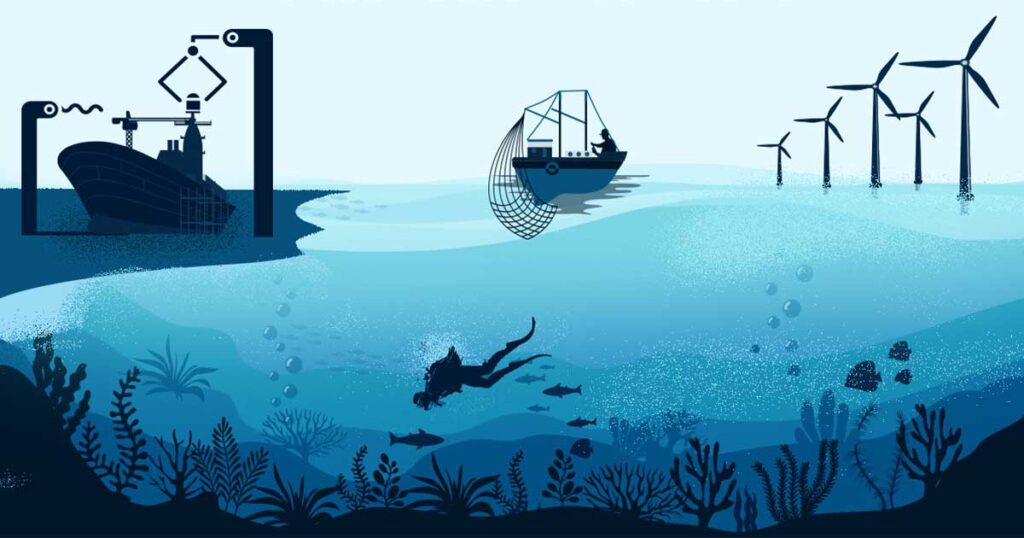
15. Ministry Calls for Business Entities’ Support for Blue Economy
JAKARTA – The Ministry of Marine Affairs and Fisheries called for the involvement of business entities, the private sector, and other institutions in financing the development of the marine and fishery sectors to support blue economy programs. The ministry’s Secretary General, Rudy Heriyanto Adi Nugroho, stated that as the biggest archipelagic country in the world, Indonesia has vast potential in marine and fishery resources.
Marine Affairs and Fisheries Minister Sakti Wahyu Trenggono has launched five blue economy policies to maintain the balance between ecology and the economy. The policies include expanding marine conservation areas, quota-based measured fishing, and sustainable marine, coastal, and land aquaculture development; monitoring and controlling coastal regions and small islands; and handling plastic waste in the sea with fishers’ participation.
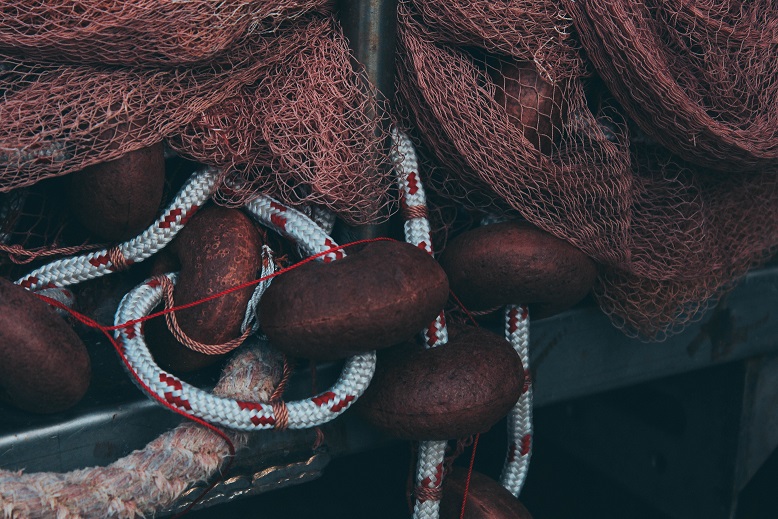
16. Lawsuit Seeks to Protect Marine Mammals From Foreign Fishing Gear, Enforce Seafood Import Bans
NEW YORK—Conservation and animal protection groups sued several federal officials and departments in the US Court of International Trade for failing to implement the import provisions of the Marine Mammal Protection Act (MMPA). The provisions protect marine mammals from bycatch in foreign fishing gear by holding countries exporting seafood to the United States to the same standards as U.S. fisheries.
The Animal Welfare Institute, Center for Biological Diversity, and Natural Resources Defense Council filed the lawsuit against the U.S. Department of Commerce, National Marine Fisheries Service, U.S. Department of the Treasury, and U.S. Department of Homeland Security. It seeks a court order directing the government to implement the MMPA’s mandate to ban seafood imports from countries whose fisheries kill too many marine mammals.
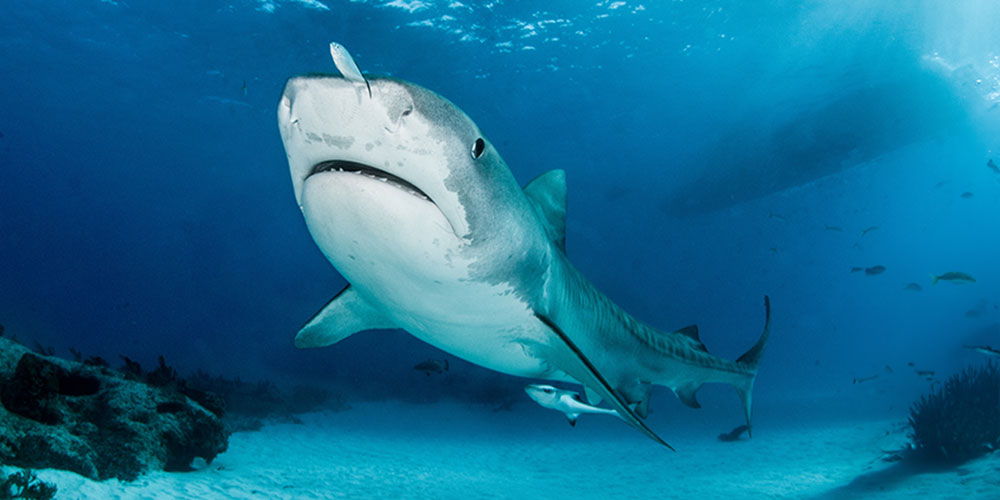
17. Dangerous Demand: How Humans Threaten Biodiversity
Sharks, having survived numerous environmental disasters, now face their most dangerous rival: humans. A new economic analysis reveals how high demand can lead to species extinction and accelerate mass extinction. The Living Planet Index shows a 69% decline in biodiversity over 50 years, indicating a biodiversity crisis and the potential sixth mass extinction, the first caused by humans. Professors Rolf Weder and M. Scott Taylor researched the economic causes of extinction, concluding that mass extinction can occur due to human activities, supported by both theory and empirical findings.
Economic theory explains that indiscriminate shark fin consumption leads to the hunting of all large sharks, pushing slow-reproducing species toward extinction. Initially, fast-reproducing species survive, but as demand shifts to them, their populations also decline.
Want to dive into the full report? Click the first link!
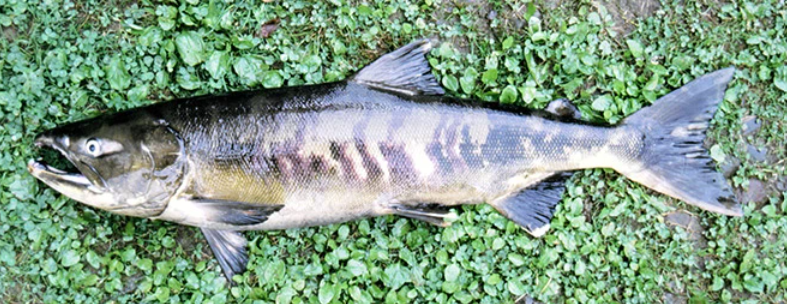
18. Japanese Salmon Lose Out as Rival Moves North Due to Climate Change
Chum salmon, a migratory species from Japan, are facing a decline due to competition with pink salmon for food in the Northern Pacific Ocean, driven by global warming. These fish migrate through the Sea of Okhotsk, the Bering Sea, and the Gulf of Alaska before returning to spawn in Japanese rivers. Recently, only 20-30 million chum salmon return annually, down from 70 million in 2005.
Researchers, including Masahide Kaeriyama from Hokkaido University, found that pink salmon have thrived in the warmer waters of the Bering Sea, outcompeting chum salmon for plankton. Climate change has raised coastal water temperatures since the 2010s, allowing pink salmon to survive in more significant numbers, impacting the chum salmon population in Japan.

19. Vigyan Yuva Awardee Roxy Mathew Koll: Mapping Climate Change
Roxy Mathew Koll is a climate scientist at the Indian Institute of Tropical Meteorology and won the Vigyan Yuva Shanti Swarup Bhatnagar Award for Earth Scientist. He has contributed significantly to the Intergovernmental Panel on Climate Change (IPCC) reports and chaired the Indian Ocean Region Panel. His research focuses on climate change in the Indo-Pacific, particularly the Indian subcontinent, studying extreme weather events like floods, droughts, and cyclones.
Koll uses long-term data and climate models to understand climate mechanisms, with a recent focus on marine heat waves. These heat waves, which cause coral bleaching and disrupt fisheries, are projected to become semi-permanent in the Indian Ocean by 2060 due to global warming, posing risks to coastal populations and marine life.
Want more details? You know what to do!
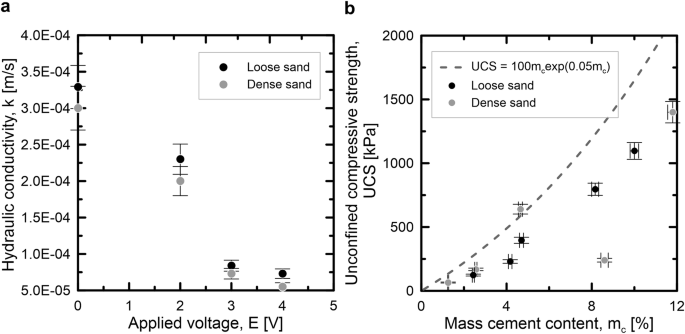
20. Half of Our Beaches Could Disappear in Less Than 100 Years. Electroshock Theory Could Save Them
But you came here to understand how the “Electroshock Theory” works, so click on the first link and read “Electrodeposition of calcareous cement from seawater in marine silica sands.” “Cliff Notes” are – Northwestern Engineering proposes an approach to coastal protection by using mild electric stimulation to turn dissolved seawater minerals into solid mineral binders, creating a natural cement. This method mimics shell-dwelling animals like mollusks, which convert ions and dissolved minerals into calcium carbonate for their shells.
By applying a mild current of 2 to 3 volts, materials convert into calcium carbonate, while 4 volts produce magnesium hydroxide and hydromagnesite, binding sand particles and enhancing coastal resilience. This technique is environmentally friendly, as low voltages do not harm marine life, and the process is reversible. This innovative method could offer a sustainable solution for protecting coastlines without the environmental disruption of traditional infrastructure.




